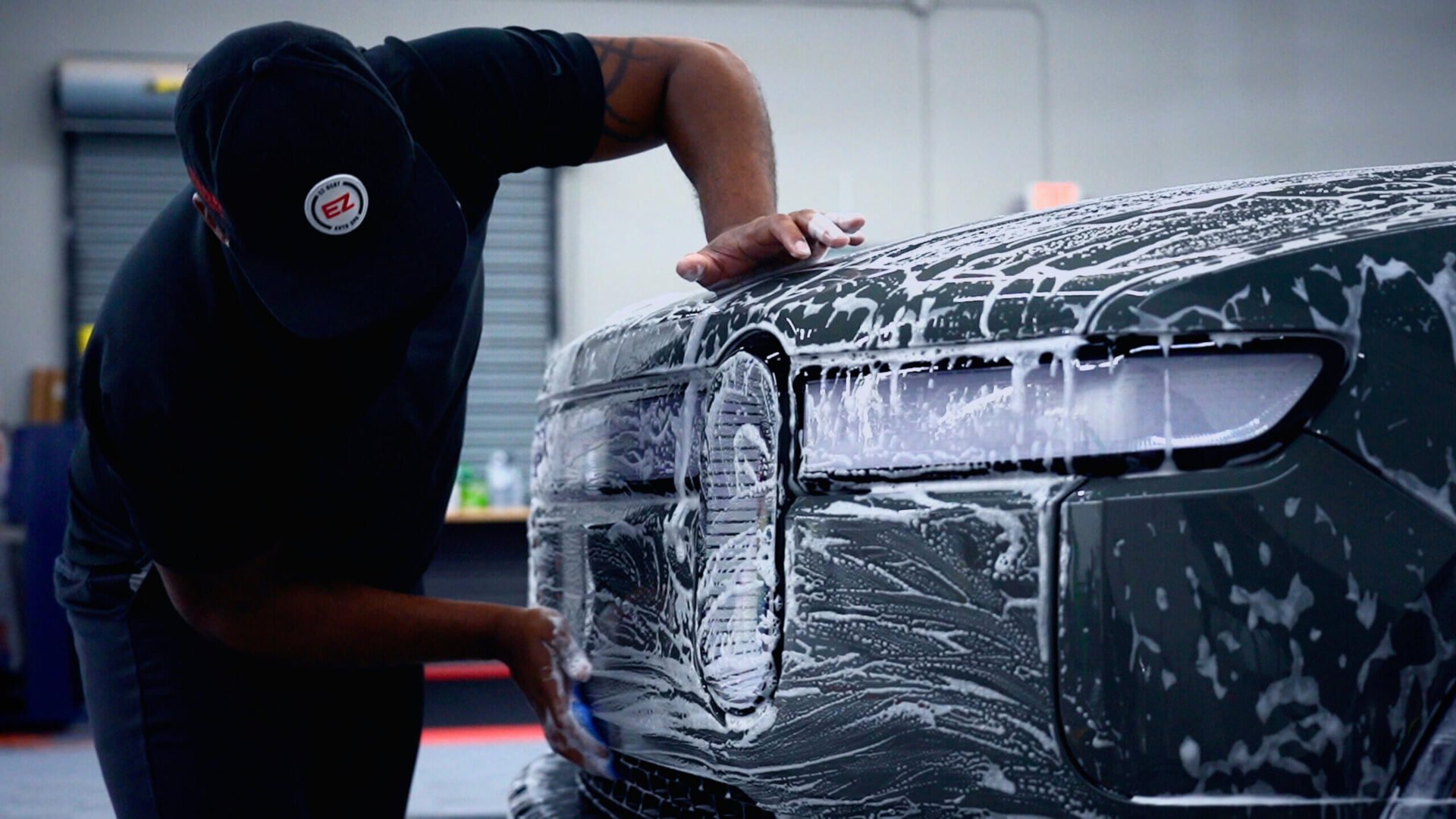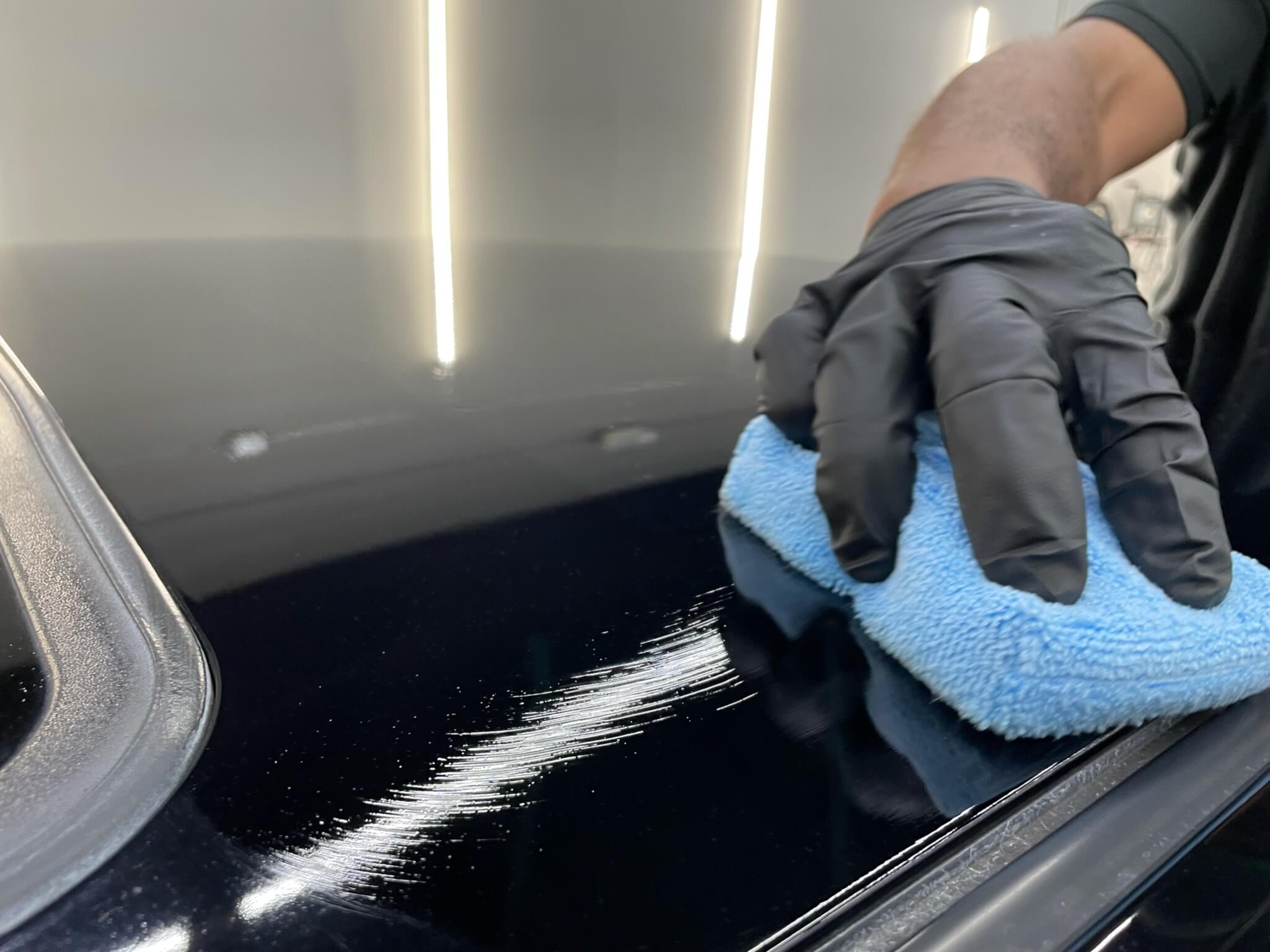The Significance of Ceramic Coating: Securing Your Car's Exterior With Precision
In a period where maintaining the functional and aesthetic integrity of your automobile is paramount, ceramic finishing arises as a crucial service. With its special bonding homes, ceramic layer offers a level of security that far exceeds typical waxing approaches.
Benefits of Ceramic Coating
When it concerns protecting an auto's aesthetic charm, ceramic layer uses substantial advantages. This sophisticated safety layer provides a long lasting guard against environmental pollutants, including dirt, gunk, and unsafe UV rays. By forming a semi-permanent bond with the automobile's paint, ceramic layers successfully protect against oxidation and fading, guaranteeing that the car maintains a glossy, showroom-like surface for a prolonged duration. This not just boosts the lorry's visual appeal but also adds to its long-lasting value.
In addition to its protective top qualities, ceramic finish provides remarkable hydrophobic residential or commercial properties, causing water and various other liquids to grain off easily. This attribute streamlines the cleaning procedure, as dirt and debris are much less likely to follow the surface area, lowering the frequency and initiative required for upkeep. In addition, the finish's resistance to chemical stains from acidic impurities like bird droppings and tree sap is one more significant benefit, decreasing prospective paint damages.
Ceramic coverings additionally improve scratch resistance, supplying a layer that can take in minor abrasions and swirl marks. This attribute is particularly advantageous in maintaining an immaculate surface area, minimizing the probability of noticeable imperfections and protecting the stability of the car's paintwork in time.

Exactly How Ceramic Coating Functions
Comprehending the auto mechanics behind ceramic covering reveals its efficacy as a safety remedy for automobiles. Ceramic finishes are essentially liquid polymer applications that chemically bond with a car's manufacturing facility paint, developing a safety layer.
Application of ceramic finishing includes a meticulous procedure. Originally, the car's surface have to be extensively cleaned up and decontaminated to ensure optimum bond. When applied, the liquid polymer creates a semi-permanent bond with the paint, setting right into a transparent, durable shield. This guard boosts the car's gloss and hydrophobic homes, helping with simpler cleansing by triggering water and contaminants to grain and slide off effortlessly.
Furthermore, the layer's molecular structure supplies resistance to small scratches and chemical spots. Unlike waxes or sealers that rest on top of the paint, ceramic coverings incorporate with the surface area, offering resilient defense. This integration is fundamental to its efficiency, making certain the car's coating continues to be pristine for many years.
Comparing Ceramic Coating to Alternatives
In the world of auto protection, ceramic covering stands as a powerful choice when contrasted to standard options such as sealers and waxes. While waxes use a short-lived glossy coating, typically lasting only a few weeks to months, ceramic coverings offer a longer-lasting option, commonly sustaining for several years. This durability is credited to the chemical bonding that occurs when ceramic coverings are applied, forming a solid layer that is resistant to environmental threats.
Contrastingly, sealers, although even more durable than waxes, still disappoint the durable defense used by ceramic finishings. Sealants can generally last for approximately a year, supplying a synthetic shield versus particular components. Nevertheless, they lack the superior hydrophobic homes and UV security that ceramic coverings deliver.
Additionally, ceramic finishings offer boosted scratch resistance, which neither waxes neither sealants can effectively match (ceramic coating). This is particularly beneficial in keeping a cars and truck's immaculate appearance. In addition, ceramic coverings streamline maintenance initiatives by reducing the adherence of dust and grime, therefore assisting in easier cleansing. In recap, while conventional waxes and sealers provide standard protection, ceramic layers provide a comprehensive, lasting service that dramatically boosts and preserves the lorry's outside coating.
Application Refine Explained
Applying ceramic covering to a car needs a careful procedure to make sure ideal outcomes and durability. The initial step involves completely cleaning up the auto's surface to remove dirt, grease, and previous waxes. This is important for making certain the coating adheres appropriately. A pH-neutral hair shampoo and a clay bar treatment are frequently utilized to accomplish an excellent surface area. As soon as cleaned, the car is dried out and brightened find out here to eliminate any type of flaws, as any kind of existing scratches or swirls can end up being a lot more noticable after the layer is applied.
Adhering to surface prep work, the application of the ceramic finishing starts. The finish is usually applied in a climate-controlled setting to stop dust fragments from choosing the newly cleansed surface area. Making use of an applicator pad, the ceramic finishing is applied in tiny sections to make sure even protection. It is important to follow the maker's standards concerning the appropriate treating time and application density.
After application, the layer requires a certain healing period, during which the automobile needs to be protected from water and pollutants. This healing procedure can vary depending upon the item yet generally ranges from 24 to two days. Eventually, this thorough procedure is critical in accomplishing a shiny and resilient finish.
Maintenance Tips for Durability
To preserve the durability of a ceramic layer, adherence to a disciplined maintenance routine is essential. Regular cleaning is extremely important; utilize a pH-neutral cars and truck hair shampoo and soft microfiber gloves to stay clear of abrasions. Stay clear of automatic vehicle washes, as their extreme brushes can compromise the covering's stability. Rather, select a hand wash to guarantee thorough yet gentle cleaning.
Post-wash, drying the vehicle with a tidy microfiber towel protects against water places that might weaken the layer with time. In addition, use a ceramic finish booster every few months. These boosters strengthen the hydrophobic properties and boost the layer's safety abilities, ensuring it continues to be efficient against impurities.
Remember that auto parking locations play a vital role in upkeep. ceramic coating. Whenever possible, park in shaded areas to minimize UV direct exposure, which can gradually compromise the finishing. For long-term storage space, consider making use of an automobile cover for included security versus environmental components
Conclusion
In final thought, ceramic coating serves as a crucial protective layer for automobile outsides, offering lasting protection versus environmental elements such as uv, dirt, and grime rays. Understanding the application process and adhering to maintenance suggestions are crucial for taking full advantage of the durability and efficiency of ceramic layer.
When it why not try these out comes to preserving an automobile's aesthetic appeal, ceramic finishing provides considerable advantages. By forming a semi-permanent bond with the car's paint, ceramic finishings successfully stop oxidation and fading, making certain that the car keeps a shiny, showroom-like coating for an extensive duration. Ceramic finishes are use this link basically fluid polymer applications that chemically bond with a vehicle's factory paint, creating a safety layer. In summary, while standard waxes and sealers offer basic defense, ceramic finishes provide a comprehensive, lasting option that considerably maintains the car and boosts's exterior finish.
